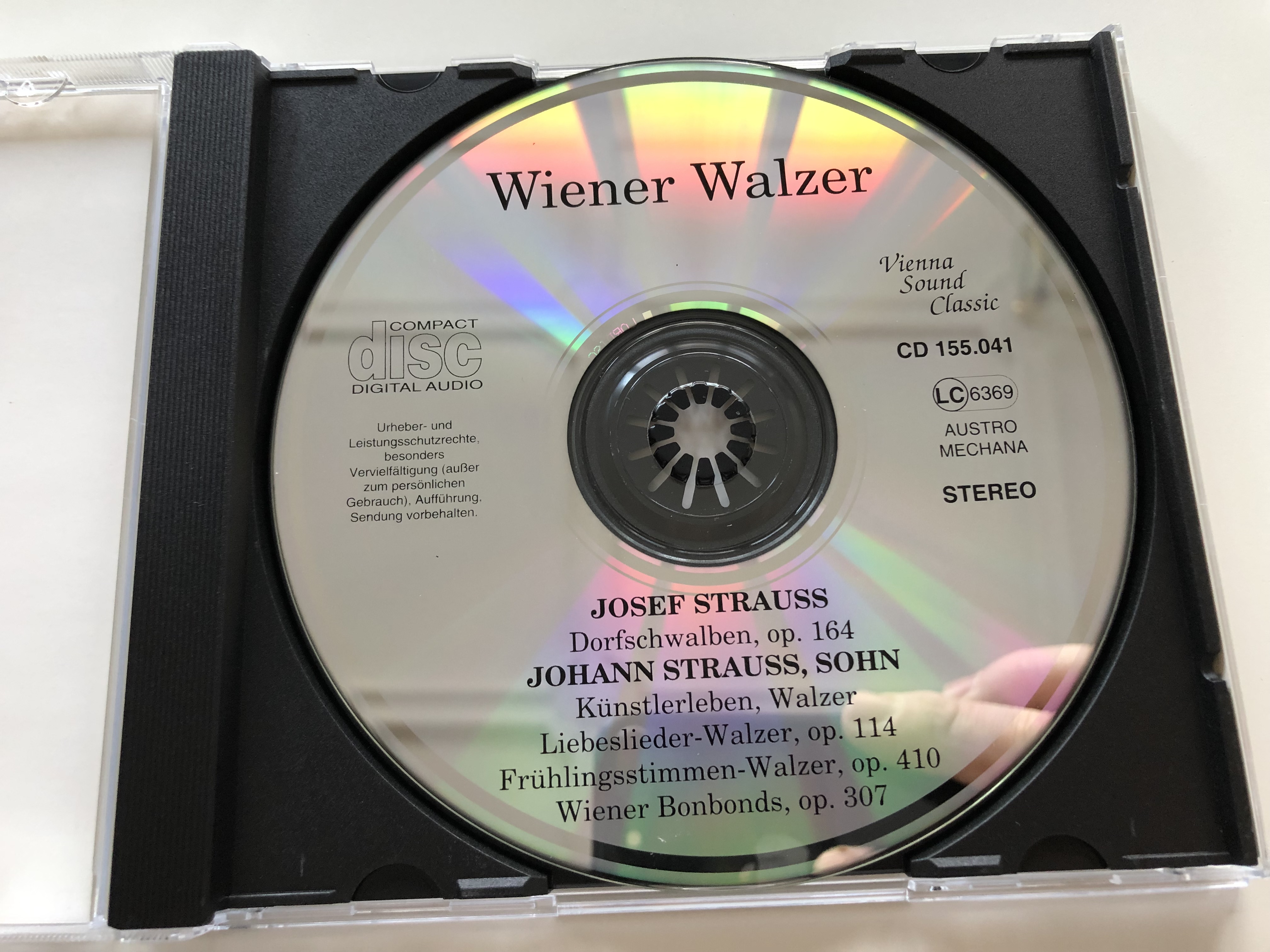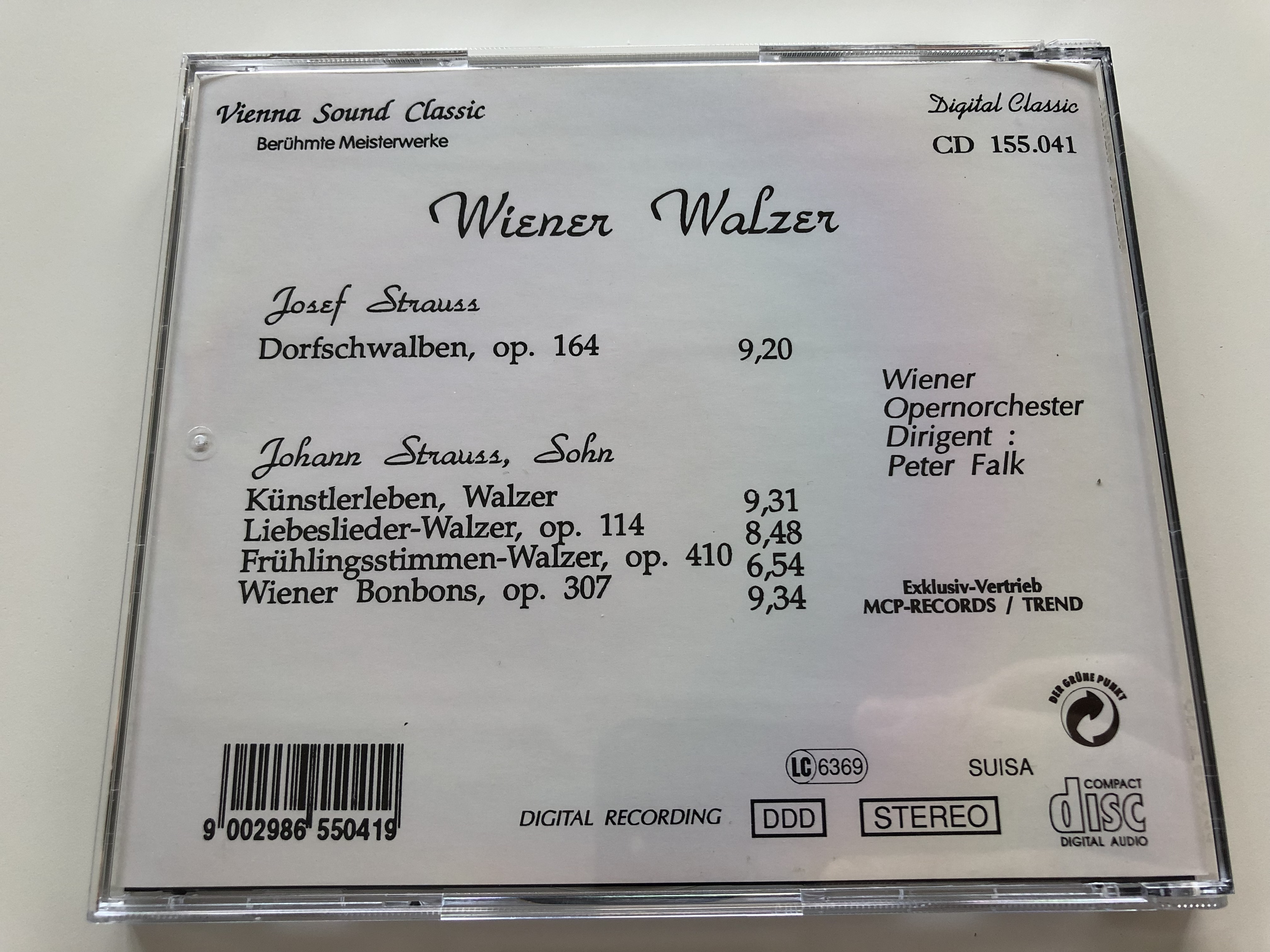Description
Vienna SOUND Classic
Berühmte meisterwerke: Wiener Walzer
Das Ballfest Joseph Lanner führt mit seinem geigenspiel einen walzer an. (StrauB & Lanner) Dorf Schwalben und andere Wiener Orchester Dirigent: Peter Falk
AUDIO CD 1833 - 1897
DIGITAL RECORDING AND MASTERING
Austro Mechana LC6369
UPC 9002986550419
CD 155.041
Tracklist:
Josef Strauss
Dorfschwalben, op. 164 9:20
Johann Strauss, Sohn
Künstlerleben, Walzer 9:31
Liebeslieder.Walzer, op. 114 8:48
Frühlingsstimmen-Walzer, op. 410 6:54
Wiener Bonbons, op. 307 9:34
Wiener Opernorchester
Conductor / Dirigent: Peter Falk
Exklusiv-Vertrieb: Mcb-Records / Trend
Der Wiener Walzer ist ein Gesellschafts- und Turniertanz, der paarweise getanzt wird und zu den Standardtänzen des Welttanzprogrammsgehört. Mit ungefähr 60 Takten pro Minute (entspricht 180bpm) ist er nach Takten, wenn auch nicht nach Taktschlägen, der schnellste Tanzdes Welttanzprogramms.
Viennese waltz (German: Wiener Walzer) is a genre of ballroom dance. At least four different meanings are recognized. In the historically first sense, the name may refer to several versions of the waltz, including the earliest waltzes done in ballroom dancing, danced to the music of Viennese waltz.
What is now called the Viennese waltz is the original form of the waltz. It was the first ballroom dance performed in the closed hold or "waltz" position. The dance that is popularly known as the waltz is actually the English or slow waltz, danced at approximately 90 beats per minute with 3 beats to the bar (the international standard of 30 measures per minute), while the Viennese waltz is danced at about 180 beats (58-60 measures) per minute. To this day however, in Germany, Austria, Scandinavia, and France, the words Walzer (German), vals (Danish, Norwegian, and Swedish), and valse (French) still implicitly refer to the original dance and not the slow waltz.
The Viennese waltz is a rotary dance where the dancers are constantly turning either toward the leader's right (natural) or toward the leader's left (reverse), interspersed with non-rotating change steps to switch between the direction of rotation.
As the waltz evolved, some of the versions that were done at about the original fast tempo came to be called specifically "Viennese waltz" to distinguish them from the slower waltzes. In the modern ballroom dance, two versions of Viennese waltz are recognized: International Style and American Style.
Today the Viennese waltz is a ballroom and partner dance that is part of the International Standard division of contemporary ballroom dance.
Josef Strauss (20 August 1827 – 22 July 1870) was an Austrian composer.
He was born in Mariahilf (now Vienna), the son of Johann Strauss I and Maria Anna Streim, and brother of Johann Strauss II and Eduard Strauss. His father wanted him to choose a career in the Austrian Habsburg military. He studied music with Franz Dolleschal and learned to play the violin with Franz Anton Ries.
He received training as an engineer, and worked for the city of Vienna as an engineer and designer. He designed a horse-drawn revolving brush street-sweeping vehicle and published two textbooks on mathematical subjects. Strauss had talents as an artist, painter, poet, dramatist, singer, composer and inventor.

























